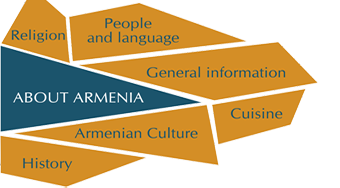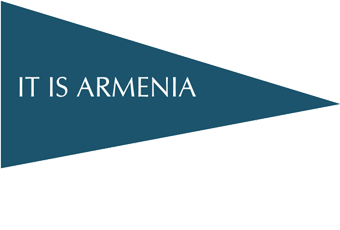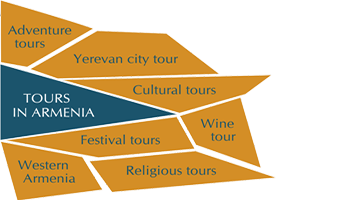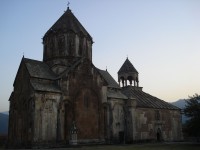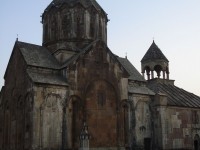Gandzasar
The monastic complex Gandzasar is located in the village of Vank of Martakert Province of the Nagorno-Karabakh Republic. The name of Gandzasar is connected with the metal mines in the nearby mountains (in Armenian Gandz – treasure, Sar - Mountain). It has been the spiritual center of Artsakh over the centuries. Separate Patriarchate functioned in Gandzasar in the late Middle Ages. As the Armenian Catholicos (supreme patriarch of the Armenian Gregorian Church) Ananias Mokatsi evidenced, there was a church as early as in the 10th century, traces of which have not survived. The first church of the monastery, St. Hovhannes Mkrtich (John the Baptist), was built by the architect Karim, under the auspices of the count Khacheni Hasan-Jalal, in 1216. It is a cruciform church with a central dome and two-storey vestries in the corners. There are set the high reliefs of a ram, bull and man heads inside, on the basis of the drum. The proscenium is decorated with geometric sculptures. The most outstanding are the 16 faceted drum and a fan-shaped spire. The faces are processed with sculptures, sculptured platbands of the windows and the pilasters. Christ, Adam and Eve, two churchwardens (ktitor) are depicted on the western faces, and the worshipping people with nimbuses that appeal to the Virgin Mary, depicted on the pediment of the middle face are depicted on the southern faces. There are the sculptures of an ox head and an eagle with outstretched wings on the drum, the sculpture of partridge on the southern facade, and the sculptures of birds on the western wall. There is a highly artistic high relief - the scene of the crucifixion on the western facade of the church. The narthex (gavit) is a spacious room with arches. In 1261 the countess Mamkan build a large narthex (gavit) in front of the church, which became the graveyard of the count family of Hasan Jalalyan. The narthex (gavit) is covered with cruciform arches and looks very much like the narthex of Haghpat. There was a rich book depository in the church. There functioned a Seminary in the Middle Ages. Gandzasar was the center of the Armenian liberation struggle in the 17th-18th centuries. Hovhannes Miaynaketsi left the inscription of the Hasan Jalal the great vow on the northern wall of the St. Hovhannes Mkrtich (John the Baptist) church of Gandzasar, in 1240. According to the 27-lined will of Hasan Jalal the Great , when the construction works of Gandzasar started and the stonemasons reached the eastern window, his mother, Khorishah went to Jerusalem, just like Heghine, the wife of King Abas, had done, and stayed there as a hermit in the church of St. Haroutiun for the rest of her life. According to his will, he freed the church from taxes and by the will of the congregation and by the patriarchy of Nerses Catholicos of Aghavnavanq celebrates holy liturgies. According to the legend the head of Hovhannes Mkrtich (John the Baptist), the blood of Zechariah, the father of Hovhannes Mkrtich (John the Baptist), the jaw of Grigor Lusavorich (Gregory the Illuminator), the remains of the Illuminator's grandson, Grigoris, St. Pantaleon doctor and of other martyrs are buried in Gandzasar.





